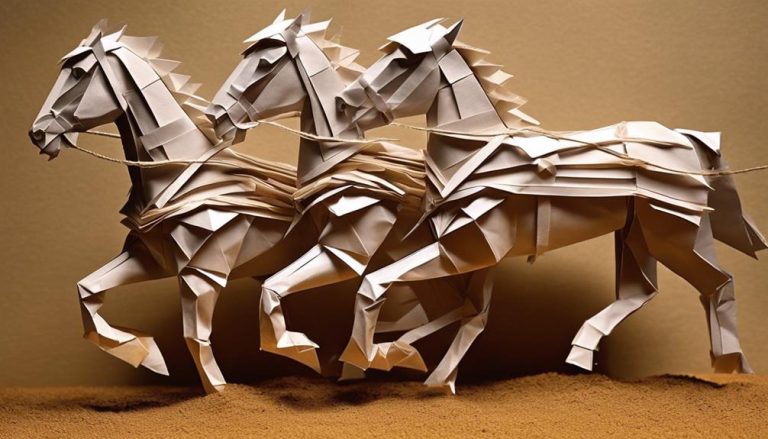General Rules of Supermoto
When it comes to participating in supermoto events, there are certain guidelines you need to be aware of to ensure a fair and safe competition. Understanding the nuances of safety gear requirements and track regulations is crucial, but there's more to it than just that. These guidelines extend to bike specifications, competition classifications, starting procedures, and even consequences for rule violations. So, strap in and get ready to navigate the intricate world of supermoto racing regulations.
Safety Gear Requirements
When riding supermoto, you should always wear the necessary safety gear to protect yourself in case of accidents. Helmet requirements are crucial in supermoto racing. A properly fitting helmet that meets safety standards is non-negotiable. Look for helmets that are DOT (Department of Transportation) approved, as these meet the basic safety standards. Full-face helmets are highly recommended as they provide the most protection for your head and face. Make sure your helmet fits snugly and does not obstruct your vision.
In addition to helmets, protective gear regulations often require riders to wear appropriate clothing such as gloves, jackets, pants, and boots. These items not only protect you in case of a fall but also provide comfort and flexibility while riding. Gloves with reinforced palms can prevent blisters and offer better grip on the handlebars. Riding jackets and pants with armor inserts offer additional protection for your joints and vital organs. Sturdy boots that cover your ankles provide stability and shield your feet from debris.
Keep in mind that safety gear is not just about meeting regulations; it's about safeguarding yourself while enjoying the thrill of supermoto. Investing in high-quality safety gear is an investment in your well-being and can make a significant difference in the event of an accident. Stay liberated on the track by being proactive about your safety.
Race Track Regulations
To ensure a smooth and safe racing experience, familiarize yourself with the race track regulations before hitting the course. Track etiquette plays a crucial role in maintaining order and safety during supermoto races. When on the track, always be aware of other riders around you. Respect their space and make clean passes without aggressive maneuvers that could lead to accidents. Remember, everyone is out there to have a good time and compete fairly.
Cornering techniques are essential for mastering supermoto race tracks. Proper cornering not only improves your lap times but also keeps you safe. As you approach a turn, focus on your entry speed and positioning. Brake in a straight line before leaning your bike into the corner. Once you hit the apex, smoothly accelerate out of the turn to maintain momentum. Practice different cornering techniques during training sessions to find what works best for you.
Following these track regulations and honing your cornering skills will undoubtedly elevate your performance on the supermoto circuit. Embrace the thrill of the race while respecting your fellow riders and the track itself. Remember, supermoto is not just about speed; it's about skill, strategy, and camaraderie.
Bike Specifications and Modifications
Understanding the essential bike specifications and potential modifications is key to optimizing your performance in supermoto racing. When it comes to enhancing your bike for supermoto, performance upgrades play a crucial role. Upgrading components such as the suspension, brakes, and tires can significantly improve your bike's handling and overall performance on the track. Investing in high-quality aftermarket parts that are specifically designed for supermoto racing can give you a competitive edge and help you maneuver through tight corners and obstacles with ease.
In addition to performance upgrades, custom paintjobs are another way to make your bike stand out on the track. While custom paint may not directly impact your bike's performance, it adds a personal touch and can boost your confidence as a rider. Whether you opt for bold colors, unique graphics, or a sleek matte finish, customizing your bike's appearance can make a statement and reflect your individual style as a supermoto racer.
When considering modifications for your supermoto bike, it's essential to strike a balance between performance enhancements and aesthetic upgrades. By fine-tuning your bike's specifications and adding personal touches like custom paintjobs, you can create a machine that not only performs superbly but also represents your personality and passion for supermoto racing.
Competition Classifications
When it comes to competition classifications in supermoto, one key aspect to understand is the points system. Points play a crucial role in determining a racer's standing in a competition, reflecting not just speed but also consistency and strategy. Familiarizing yourself with how points are earned and tallied can give you a competitive edge in the dynamic world of supermoto racing.
Skill Levels in Races
Navigating the world of supermoto racing involves understanding the various skill levels in races, which are crucial for competition classifications. Skill assessment is key in determining which class you belong to. Training methods play a significant role in improving your abilities and moving up the ranks. In supermoto racing, classes are usually divided based on skill levels ranging from beginner to advanced. Beginners typically start in the lower classes, where the pace is more manageable, allowing for skill development. As you progress and hone your abilities through training, you can advance to higher classes where the competition intensifies. Understanding the skill levels in races is essential for choosing the right class that challenges you appropriately and helps you grow as a supermoto racer.
Bike Specifications for Classes
To compete effectively in supermoto races, it is crucial to familiarize yourself with the specific bike specifications required for each competition class. Engine size restrictions and weight limitations play a significant role in determining which class your bike is eligible for. Different classes often have varying engine displacement limits, ensuring fair competition among participants. Additionally, weight restrictions are in place to maintain parity and competitiveness across all bikes. Understanding these constraints is essential for selecting the right class and optimizing your bike for performance.
In supermoto racing, tire compounds and suspension setup are also crucial considerations. The type of tire compound can greatly affect your bike's traction and handling on different surfaces, while the suspension setup impacts how your bike responds to bumps and turns. Fine-tuning these aspects can make a substantial difference in your racing performance.
Points System in Competitions
Understanding the points system in supermoto competitions is crucial for determining competition classifications and tracking your performance effectively. The scoring system and judging criteria play a significant role in ensuring fair play and promoting a sportsmanship attitude among competitors. Here's a breakdown of how points are typically awarded in supermoto competitions:
| Criteria | Points Awarded |
|---|---|
| Race Winner | 25 Points |
| Second Place | 20 Points |
| Third Place | 16 Points |
Starting Procedures and Flags
When preparing to race in supermoto, being aware of the starting procedures and flags is crucial for a smooth and successful start. Flag etiquette is paramount in supermoto racing. Each flag has a specific meaning that you must understand to react appropriately during the race. From the green flag signaling the start of the race to the checkered flag indicating the end, knowing these flags inside out will give you an edge on the track.
Understanding starting positions is key. In supermoto, starting positions can vary depending on the race format. Whether you're lined up in a staggered formation or side by side, knowing where you should be positioned can make a significant difference in your start. Paying attention to race start signals is vital. The lights or signals used to begin a race are precise and timed to ensure fairness. Being in tune with these signals can help you launch off the line ahead of your competitors.
Lastly, being mindful of track boundaries is essential. Straying off the track can result in penalties or disqualification. Understanding the limits of the track and staying within them will not only keep you in the race but also prevent unnecessary penalties. Mastering these starting procedures and flags will set you up for success on the supermoto circuit.
Penalty System and Disqualifications
When it comes to Supermoto racing, understanding the points system is crucial. You'll need to be aware of penalty point accumulation and the potential for disqualification due to rule violations. Stay sharp and race clean to avoid any penalties that could affect your standings in the competition.
Penalty Point Accumulation
In the world of supermoto racing, penalty point accumulation serves as a crucial aspect of maintaining fair competition and discipline among riders. When participating in supermoto events, it's essential to understand how the penalty system works to avoid accumulating points that could impact your standings. Here's what you need to know:
- Penalty Points: Points are assigned for rule infractions during races.
- Warning System: Riders typically receive warnings before penalty points are issued.
- Point Deductions: Some events allow for point deductions through good behavior or exceptional performance.
Being mindful of these rules helps ensure a level playing field and a smooth racing experience for all competitors.
Disqualification for Rule Violations
To maintain the integrity of supermoto racing events, understanding the penalty system and potential disqualifications is essential for all participants. Racing etiquette is paramount in supermoto, and violating rules can lead to penalties or even disqualification. Upholding sportsmanship expectations is crucial to ensure fair and respectful competition. It's important to familiarize yourself with the specific rules of each race to avoid unintentional infractions that could result in severe consequences. Remember, supermoto is not just about speed and skill; it's also about upholding the values of fair play and respect for fellow competitors. By abiding by the rules and demonstrating good sportsmanship, you contribute to creating a positive and enjoyable racing environment for everyone involved.
Frequently Asked Questions
Can Spectators Bring Their Own Bikes to a Supermoto Race Event?
Yes, you can bring your own bike to a supermoto race event as a spectator. It adds to the vibrant atmosphere and showcases bike customization. Ensure your bike meets event regulations for a seamless experience.
Are There Any Age Restrictions for Participating in Supermoto Races?
To race in supermoto events, age restrictions apply for safety reasons. Proper safety gear is vital. Training and experience shape your skill level, determining eligibility for competition. Develop your skills and meet the requirements.
Are There Specific Rules Regarding the Use of Pit Crews During a Supermoto Race?
During a supermoto race, pit crews play vital roles in executing efficient pit stop strategies. Teams rely on them for quick tire changes, fuel refills, and adjustments. Having a skilled pit crew can make a significant difference in race outcomes.
What Kind of Training or Experience Is Recommended for Beginners Looking to Get Into Supermoto Racing?
To begin your supermoto journey, immerse yourself in track etiquette and safety. Build skills through relentless practice techniques. Remember, even if you feel like a fish out of water initially, with dedication, you'll fly like a pro in no time!
Are There Any Restrictions on the Types of Tires That Can Be Used in Supermoto Races?
You can choose from a variety of tire brands, but there are restrictions on performance-enhancing features. Some races might require specific tires for durability testing. It's essential to check the regulations before hitting the track.






